07740 877 544
Vinyl graphics for St Andrews museum
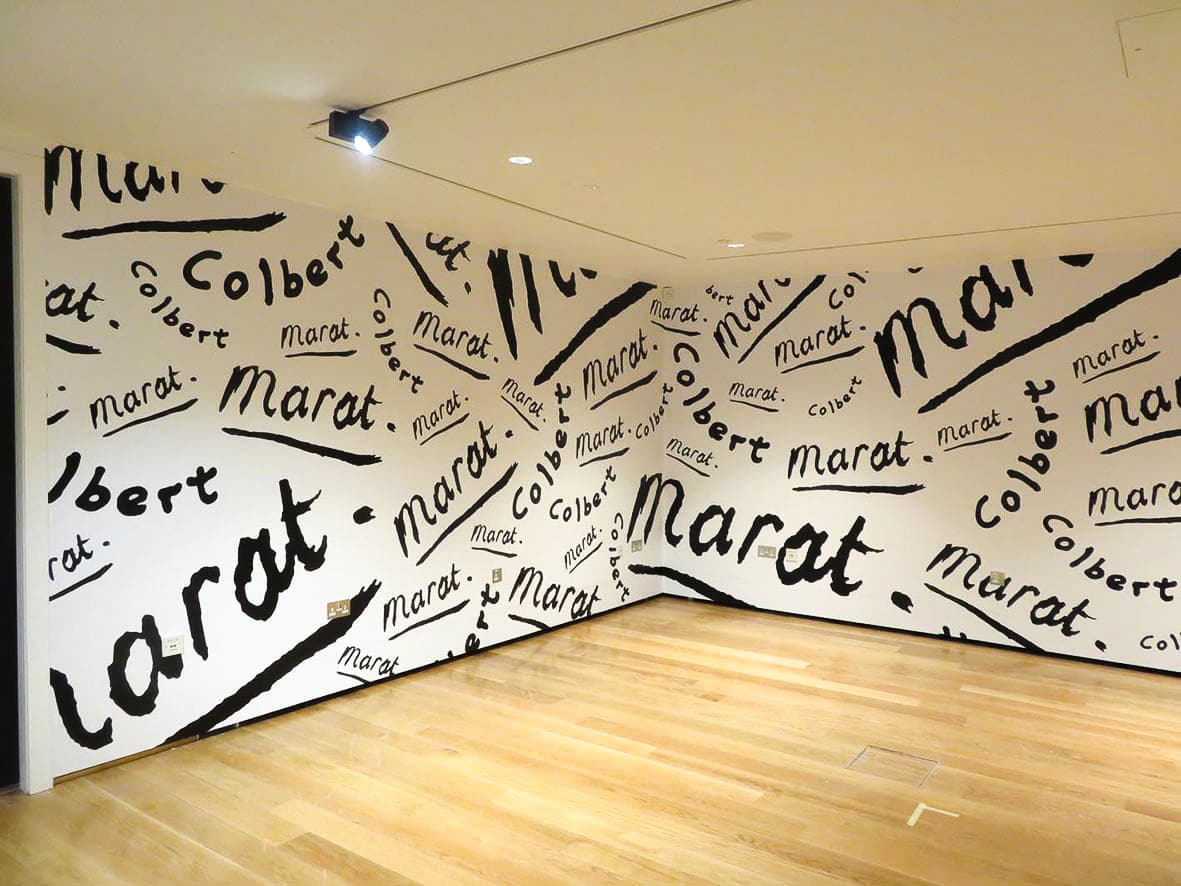
In early 2020, following extensive renovation and a change of name, St Andrews’ Wardlaw Museum prepared for opening. The museum’s newly built wing planned an exhibition with lots of vinyl graphics.
Philip Colbert’s ‘The Death of Marat & the Birth of the Lobster’ is a carnival of pop art and wild imagination. The artist’s iconic oil paintings feature everyday objects, together with a multi-coloured lobster.
The new gallery was partially wrapped in vinyl and became a part of the artists’ display. At the same time, vinyl graphics around the University of St Andrews’ library advertised the exhibition.
Planning the walls’ vinyl
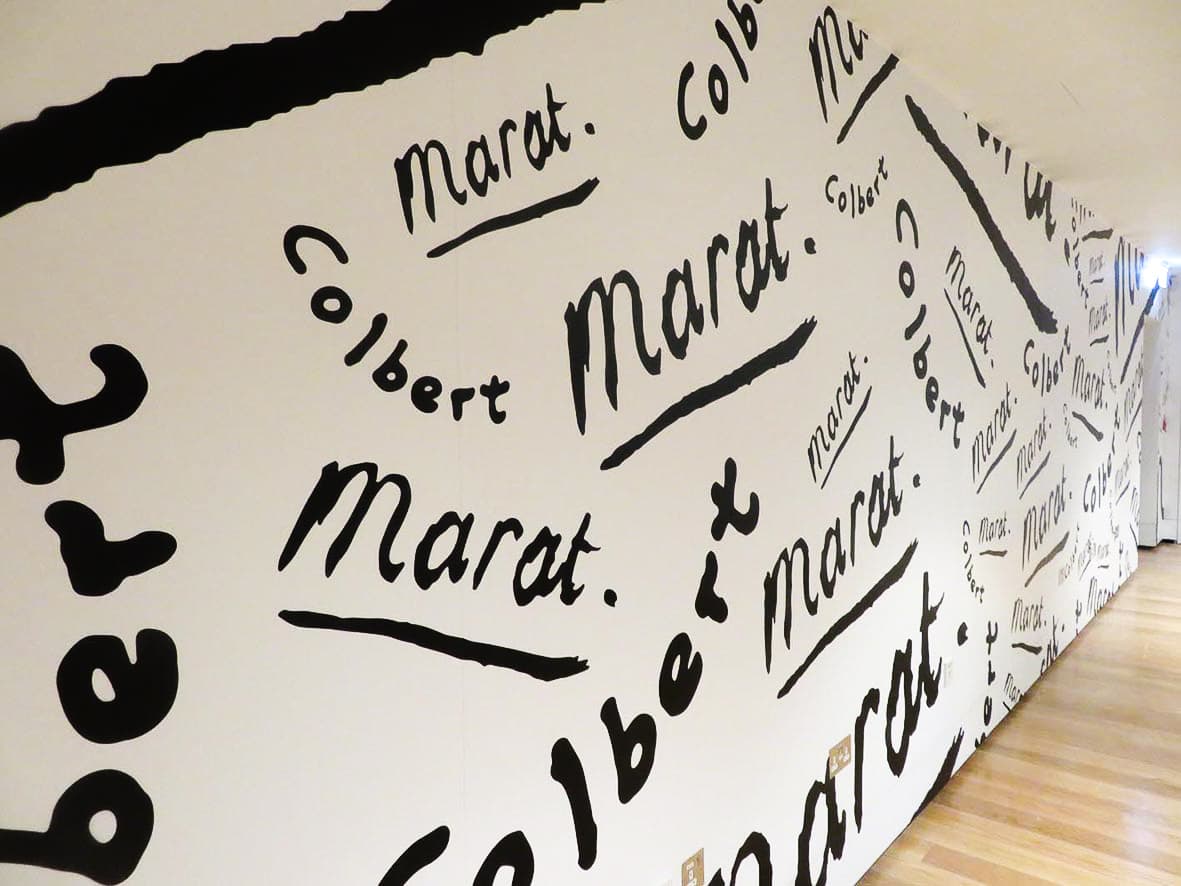
Curator, Claire Robinson asked me to wrap three walls with Philip’s artwork. Claire e-mailed the artwork, containing Philip’s hand-drawn lettering. I checked the files and tiled the scaled artwork into vertical segments. Each segment was approximately 1100mm wide, including overlaps.
The walls’ surface, as well as the exhibition’s term, influenced the type of vinyl used for the graphics. I contacted Morgan at Signature Signs in Dundee, who advised which material would be suitable to use on the plasterboard walls. A low tack vinyl was chosen.
The vinyl’s bond has an indefinite interior lifespan. It’s removed easily and leaves no gum residue. Lessening the risk of paint peeling on the gallery walls.
I provided Claire with the vinyl’s specifications, as well as my quote and lead time. My quote was approved before Signature Signs digitally printed and matt laminated forty square metres of vinyl. Like wallpaper, thirteen vertical segments were ready to apply.
Applying the wall graphics
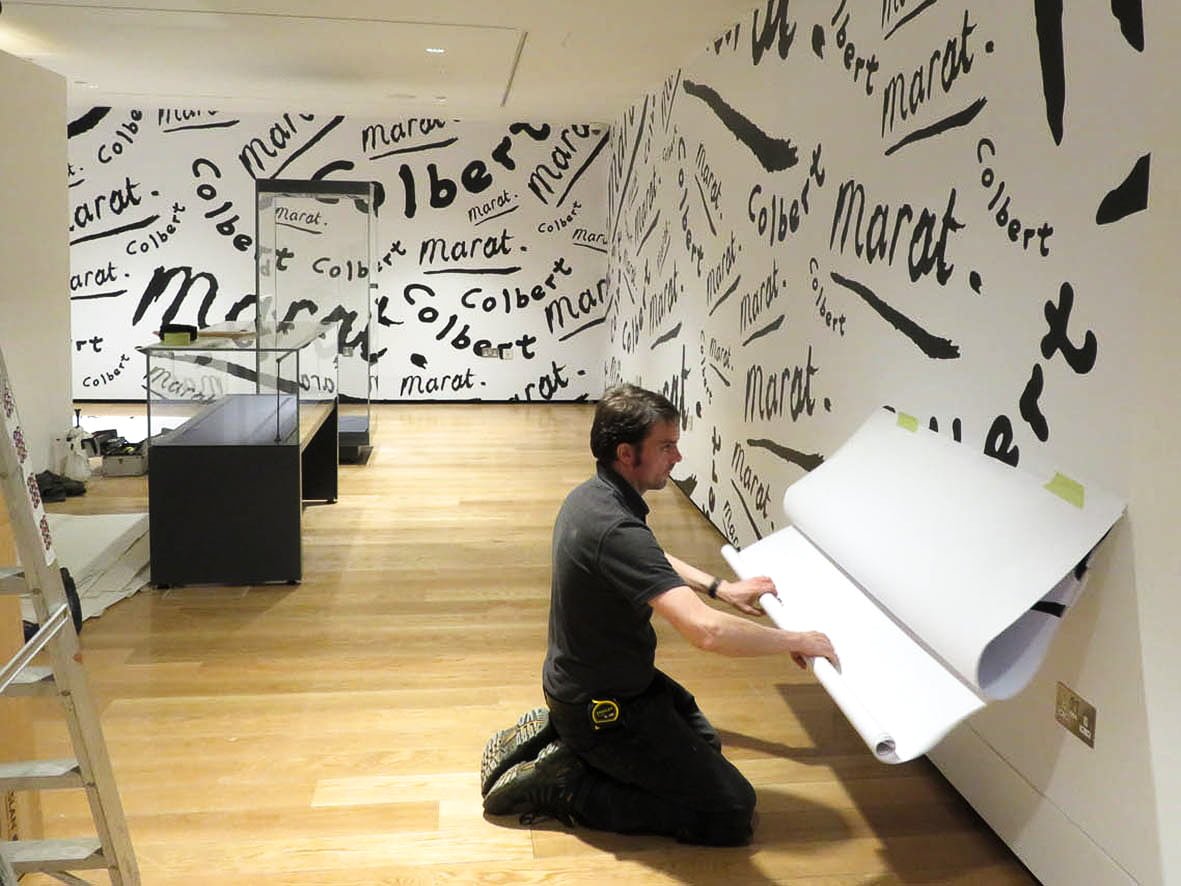
Together with the vinyl graphics, I travelled to St Andrews in early March 2020.
In order, the first few segments were tacked into position. Ensuring that the vinyl would fit and overlaps match. The overlaps join the expanse of artwork and prevent vinyl shrinkage.
Applying the large segments over the walls’ corners proved tricky. The unlevel corners pushed the vinyl in different directions and created wrinkles. With perseverance, the vinyl was gently heated and moulded into position.
Each piece was gradually squeegeed over the walls, with edges tucked and cut into the ceiling and floor. Electrical sockets were neatly cut around too, then heated to secure the bond.
Lasting over twelve hours, the wall graphics were complete and the gallery was transformed.
Vinyl holding on
Due to the pandemic of 2020, the museum’s opening was delayed with Philip’s exhibition postponed. Months passed and I wondered if the wall graphics would hold in the empty gallery.
Scotland began to move freely again, and it was Autumn 2020 before I returned to St Andrews. The walls’ graphics were as good as the last day I saw them.
Claire and her team at Wardlaw were evaluating when to open the museum. At this point, more vinyl graphics were ordered for advertising the exhibition.
Window graphics around the library
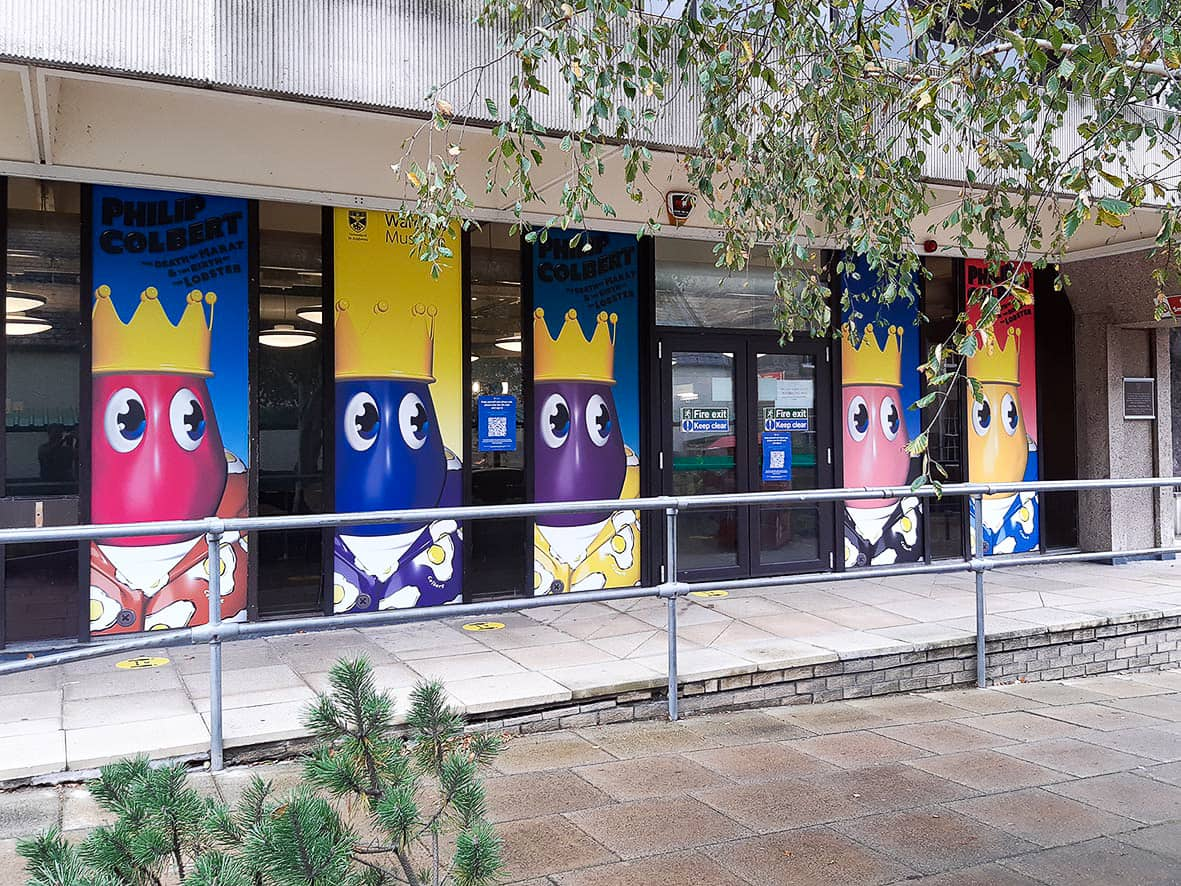
University of St Andrews library’s gardens is often busy with students and visitors. And a short distance from Wardlaw Museum. Eleven large windows were chosen to serve as billboards promoting Philip’s exhibition.
Claire sent me the window graphics’ artwork, as well as the sizes for each window. This time, the artwork was loud and vibrant. Injecting colours onto the library’s exterior. I visited the library early one Sunday and checked the measurements.
The artwork was then revised for print set-up. Each window graphic was digitally printed onto exterior grade vinyl before lamination. The laminate protects the ink and lengthens the vinyl’s durability.
Applying the window graphics
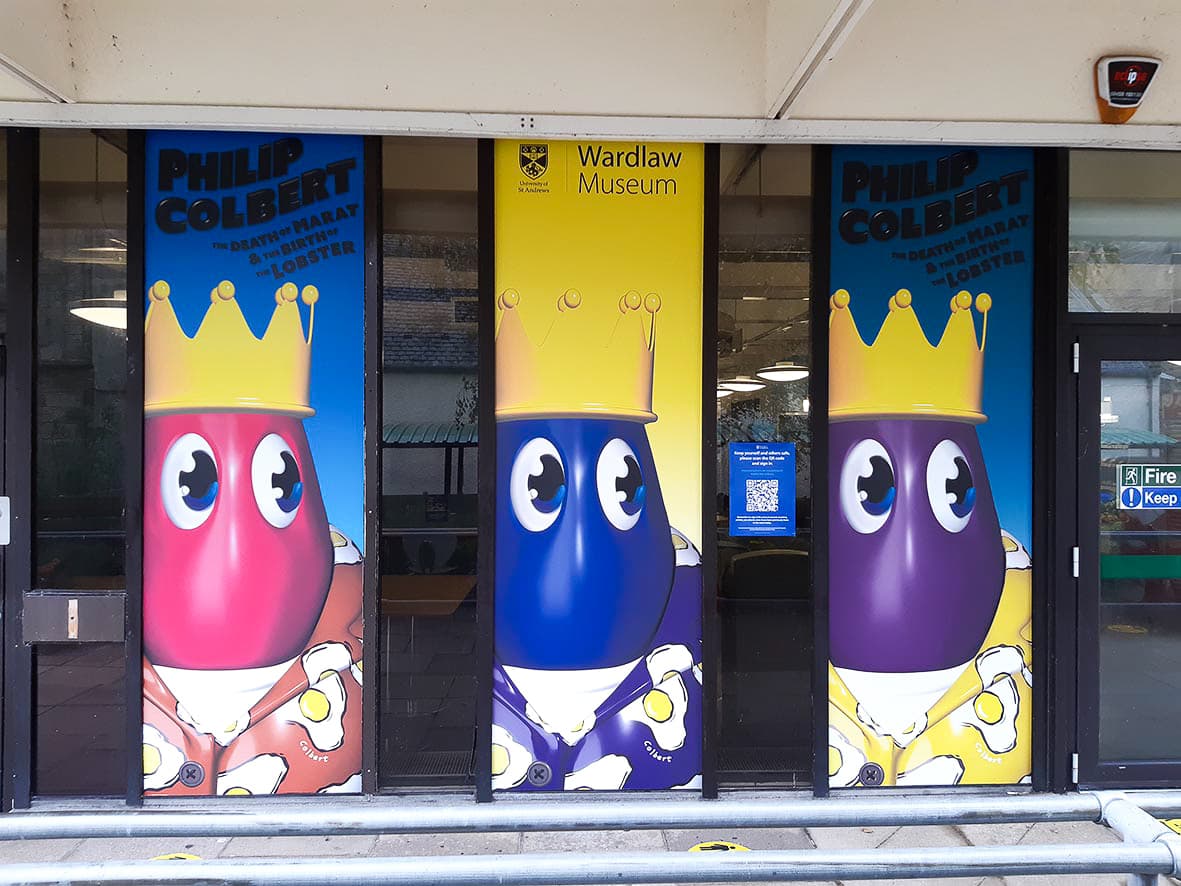
In the depth of autumn and equipped with stepladders and buckets, I travelled to St Andrews.
Each window was cleaned 2-3 times, removing all debris before thoroughly dried. I applied the graphics dry, as the damp air would hinder a wet application. One by one, the graphics were tacked up, squeegeed and cut neatly around each edge.
Marat the lobster grabbed lots of attention. Not to mention, the shift in the appearance of the library’s concrete exterior. The change was welcome and signalled life happening again, after months of uncertainty.
Benefitting from vinyl graphics
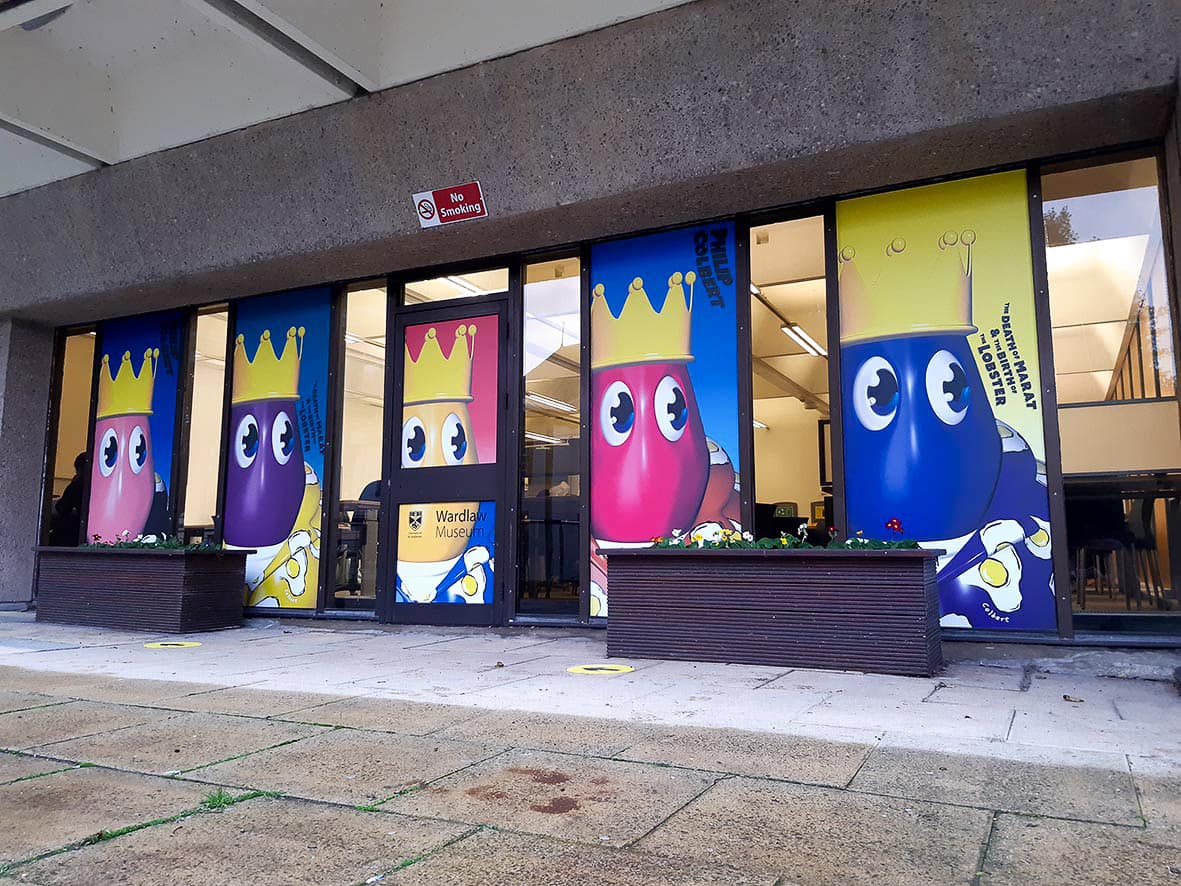
Not only was vinyl used as part of an art exhibition, but the material also advertised the show.
With constant advances in materials and printing, almost every surface can be wrapped with vinyl. Wardlaw Museum continues to choose wallcoverings for exhibitions due to the success of the first vinyl application.
Interested in learning how vinyl graphics in St Andrews can benefit your project?
Get in touch to find out more.